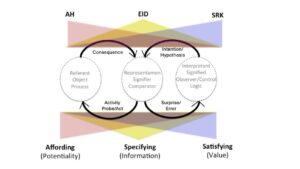
Lindblom (1979) wrote:
Perhaps at this stage in the study and practice of policy making the most common view... is that indeed no more than small or incremental steps - no more than muddling -is ordinarily possible. But most people, including many policy makers, want to separate the 'ought' from the 'is.' They think we should try to do better. So do I. What remains at issue, then? It can be clearly put. Many critics of incrementalism believe that doing better usually means turning away from incrementalism. Incrementalists believe that for complex problem solving it usually means practicing incrementalism more skillfully and turning away from it only rarely.
I am not sure that today is all that different. I think many people still see muddling (incrementalism) as a flawed approach to problem solving and decision making. It still seems to have a negative connotation and there is an implication that there is a better way to manage organizations or a better way to make decisions.
I think people equate muddling with a confused, aimless flailing. They have no concept of skilled muddling. However, for me skilled muddling is an apt description of how experts deal with complexity and uncertainty. It is not a confused, aimless process, but a carefully controlled combination of probing the world and utilizing the resulting feedback to make tentative steps in potentially satisfying directions.
The image I have is of skilled rock climbers - who are well tuned to the opportunities that different holds offer and who have a good understanding of the risks. They have developed strength and agility, so that they have a wide range of affordances in terms of what is reachable and graspable. They are careful about insuring that they have appropriate protection to guard against catastrophic falls. They are constantly establishing a firm base of support before reaching for the next hand or foot hold. And they are well-tuned to the information that allows them to identify the best supports and the viable paths toward their goal.
I see many parallels between muddling and Peirce's concept of abduction - in which experts use their experience to make tentative hypotheses about the consequences of choices and actions, and then test their hypotheses through acting on them. And then utilize the feedback to adjust their assumptions and framing to reduce surprise (error). Further I see this in terms of a closed-loop triadic semiotic process which three sources of constraint. Each of these sources reflect relations between agents and ecologies.

The first of these relations is the now familiar construct of affordance, which represents the potential for action. These reflect the relation between the effectivities of an agent (or organization) and the properties of objects in the ecology. In control systems terms this reflects the constraints of the plant dynamics in the forward loops.
The other two constructs are less familiar. The second construct, specifying, reflects the potential for perception or information pick-up. It reflects the relation between the sensor systems (e.g., eyes) of agents and structure in the related ecological mediums (e.g., optical array, or graphical interface). In control systems terms this reflects the constraints on the sensors in the feedback loops.
The third construct, satisfying, reflects the functional constraints on performance. This reflects the relation between the intentions, values, or preferences of agents and the actual consequences of particular choices or actions. In control terms this reflects the comparator where intentions are compared to feedback - resulting in a surprise or error signal.
These three components are ontologically independent. That is an affordance exists independently from the information to specify it and from the intentions of agents. Thus, a cup is graspable even though it is out of eyesight and you don't have a current use for it.
However, these three constructs are tightly coupled with respect to epistemology. Thus, for example, our experiences of affordances depend on how well they are specified, and on whether they help us to satisfy our intentions. You cannot actually grasp the cup unless you can sense it (e.g., it is in eyesight), and you are unlikely to grasp it if you don't have a use for it (e.g., to hold a liquid).
Thus, skilled muddling involves tuning the coupling of agents with their ecologies or situations - increasing the range of affordances, tuning the perceptual system and aligning your intentions with the activities that lead to satisfying consequences. The opening figure illustrates how these dimensions map into Rasmussen's intuitions about the design of cognitive systems that are capable of skilled muddling.
These ideas are developed more extensively in our book "A Meaning Processing Approach to Cognition" (Flach & Voorhorst, 2020).
